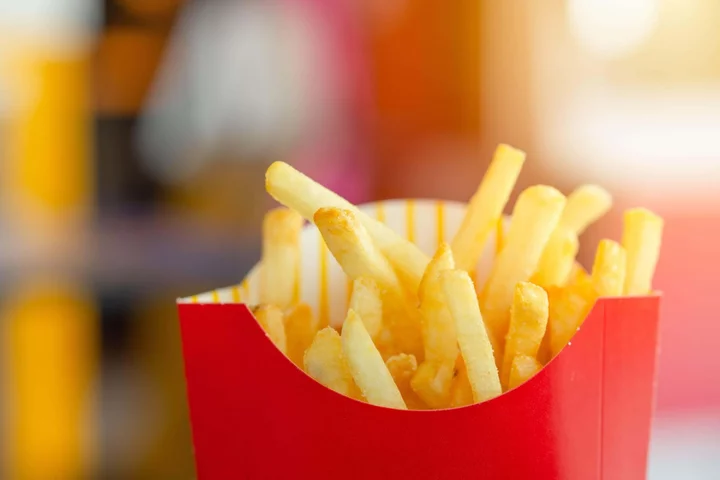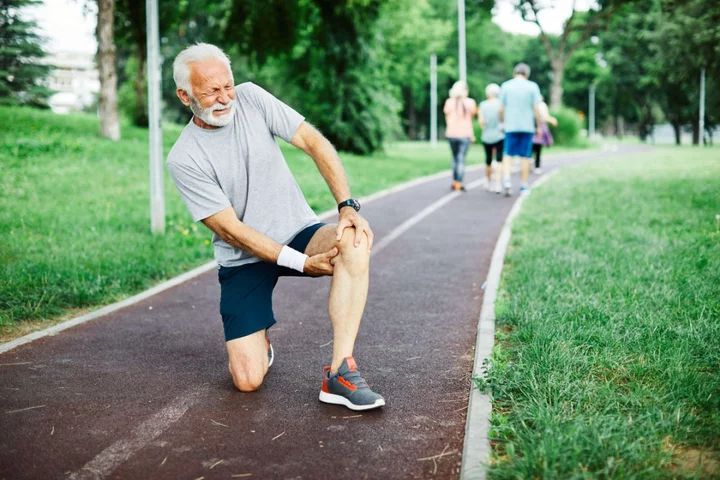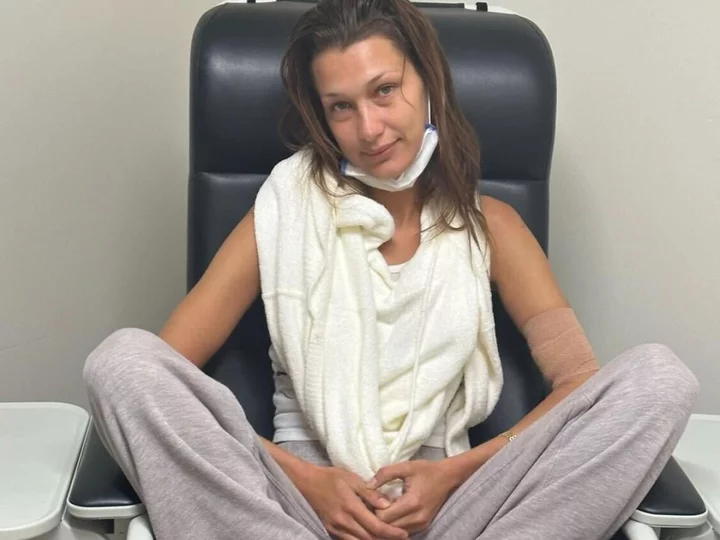
The best spa hotels in Dorset for luxury and relaxation
What makes a holiday in Dorset? Maybe it’s fish and chips at the seaside, or hiking to the highest point on England’s south coast before rewarding yourself with a pint of local beer. Or visits to nude hill figures or an iconic limestone arch might take your fancy. This jewel of the West Country has things to do in spades – eating, drinking, active or laidback – plus plenty of on-trend hotels in which to lay your head. If Dorset’s much-extolled salted sea air and bucolic tranquillity isn’t enough to bring you utter relaxation, you’re in luck. Among the county’s hills and on its rugged coast are hotels that have getting guests to unwind baked into their being. Think warmed underground pools, blissful treatments ranging from traditional through modern, and space to just… be. There’s more to Dorset than just apple cake and Thomas Hardy. If you want a UK getaway – and to give your wellbeing a holistic boost – these are the best spa hotels in Dorset to book. The best spa hotels in Dorset are: Best for style by the sea: The Nici Best for the traditional approach: Summer Lodge Country House Hotel Best for a hidden escape: The Eastbury Best for a foodie getaway: Christchurch Harbour Hotel & Spa Best for coastal cool: The Pig on the Beach Best for style by the sea: The Nici Location: Bournemouth The hotel that Bournemouth – overstocked with dowdy, dated seaside accommodation – has been crying out for. Inside, spaces are filled with art, tropical prints and a hint of Art Deco; outside, the star is a 30m heated pool, very much a nod to Miami’s South Beach, and the town’s long stetch of sand can be reached by a short zig-zag path. If you can wrench yourself from a cabana, The Nici’s swish spa beckons, all soft lighting and gentle music (a change from the pumping soundtrack poolside). Treatments incorporate products from British “nutri-cosmeceutical” beauty brand Oskia, as well as CBD pioneers OTO. The latter’s Nici signature massage is a joy, where CBD-infused oils soothing tired muscles and dislodge long-held knots; afterwards, curl up in the relaxation space and pop open a can of OTO’s CBD seltzer, before making use of the steam room, sauna and indoor pool (or the gym, if you feel suitably energised post-treatment). Best for the traditional approach: Summer Lodge Country House Hotel Location: Evershot Summer Lodge remains Dorset’s countryside grande dame (and the county’s only five-star hotel). The quintessential rural pad, it has beautifully restored rooms with high ceilings, watercolours, and chandeliers. The four-acre estate is set in Evershot, a village little changed since it featured in local author Thomas Hardy’s Tess of the d’Urbervilles (and while there, prop up the bar or sit beside the fire at the trad-yet-cool Acorn Inn). The spa is a major highlight of Summer Lodge, packed with Elemis treatments, from deep-cleansing facials through to rejuvenating wraps, plus a hefty list of massages and manicures. Bespoke spa packages can be arranged depending on the occasion, and if you’re on a family break there are special “junior” treatments for younger guests. Wellbeing extends to a gym, sauna and heated indoor pool, and there are quiet corners of the fragrant gardens in which to unwind in private. Best for a hidden escape: The Eastbury Location: Sherborne This is perhaps the prettiest little spa in the West Country, hidden at the bottom of The Eastbury’s walled garden and reminiscent of a Hobbit hole. Only the occasional ringing of bells from the abbey reminds you that you’re in the historic market town of Sherborne. There are two treatment rooms, where massage therapy mollifies any pesky aches, as well as a hydrotherapy tub, sauna and relaxation areas which you have all to yourself (you book the space by the hour). The hotel dates from the 18th century, built as gentleman’s townhouse, so expect plenty of traditional style as well as modern touches brought in during a 2018 refurb. Since the start of 2023, they no longer have a restaurant (a shame, as chef Matthew Street’s tasting menus were impressive) but instead offers breakfast, light lunches and afternoon tea. Best for a foodie getaway: Christchurch Harbour Hotel & Spa Location: Christchurch Christchurch’s natural harbour is wonderful sweep of the Dorset coast, and the best ways to soak up its views – over to Mudeford Spit and its expensive beach huts, and beyond to the Channel – is by staying at its namesake hotel. The 1930s property has a blended palette of muted and vibrant tones inside, and right on the water is its headline restaurant, The Jetty. It’s seafood-heavy menu comes from Alex Aitkin, who held a Michelin star at Le Poussin; for a reliable, fresh taste of local waters, plump for the catch of the day. The HarSpa is found below-ground – they describe it as “subterranean” – and is lit by coloured spotlights around a heated pool and whirlpool tub. While away a day on one of the sun loungers (indoor and outdoor), an activity you can break up with Espa beauty treatments or full-body massages. The spa menu also features offerings designed specifically for men and pregnant women. Best for coastal cool: The Pig on the Beach Location: Studland The litter of Pig hotels has one of its very finest locations in east Dorset, at the edge of land overlooking the Old Harry Rocks chalk formation. There’s whimsy in the turrets and sloping roofs that make up the 16th-century manor, and – in classic Pig aesthetic – there’s a surrealism in the luxe Victoriana-meets-countryside décor. The restaurant makes use of the county’s incredible larder, only sourcing produce within a 25-mile radius, and its menu favours unfussy, well-paired flavours. Don’t forget to visit the pigs and sheep in their pens, which you can hear as you knock back cocktails (try the rum-drenched Jungle Pig 2.0) on the lawn. Beyond the garden, which guests can discover down a path, are two adorable shepherd’s huts. These comprise the spa, simple and understated. They’re very Mr McGregor’s garden (of The Tale of Peter Rabbit fame) in style, in keeping with the kitchen garden ethos of the restaurant. The six treatments, each 60 minutes and costing £115, use products from the County Sligo seaweed brand VOYA. thepighotel.com Read more on the best Dorset hotels
2023-08-08 17:16

Areas with lower bird diversity ‘have more mental health hospital admissions’
Areas with lower bird diversity appear to have a higher number of hospital admissions related to mental health conditions, research suggests. Experts analysed data from ebird – an online database of bird observations by citizen scientists – to estimate diversity across the US state of Michigan. The team then combined this with hospital admissions for anxiety and mood disorders in the state. The findings, published in the journal Geo: Geography And Environment, showed lower bird diversity to be a significant predictor of higher numbers of hospital admissions for mental health conditions, highlighting the complex relationship between the disorders and biodiversity crises. It is critical we take a holistic approach to our mental health and nature Dr Rachel Buxton The researchers said that while income and the presence of green spaces were the strongest predictors of anxiety and mood disorder-related admissions, there were also independent “significant associations” between mental health and bird diversity. Lead author Dr Rachel Buxton, assistant professor at the Institute of Environmental and Interdisciplinary Sciences at Carleton University in Canada, said: “Often we consider nature as representing the amount of green space near homes or the distance to the nearest park, but the link between species diversity and health is underexplored. “Our study shows that if species diversity can affect mental health at the severe end of the spectrum (hospitalisations), it is possible that the decline in biodiversity across the globe may be intricately connected with our anxiety and mood on a day-to-day basis. “It is critical we take a holistic approach to our mental health and nature. “Investing in nature should not be viewed as a luxury, but a necessity, and evaluated in the context of the support for wellbeing it offers individuals and communities living in urban or nature-scarce environments. “Restoring and conserving diverse bird communities could be one avenue to improving mental health in cities and factored into urban restoration projects and public health policies.” Last year, researchers from King’s College London found that watching birds or listening to birdsong was linked to mental wellbeing, with effects lasting up to eight hours. The Institute of Psychiatry, Psychology & Neuroscience (IoPPN) team said at that time that the links between birds and mental wellbeing were not explained by co-occurring environmental factors such as the presence of trees, plants or waterways.
2023-08-08 16:19

Brain’s appetite control centre different in overweight or obese people – study
The brain’s appetite control centre is different in the brains of people who are overweight or live with obesity, a new study suggests. The researchers said their findings add further evidence to the relevance of brain structure to weight and food consumption. Current estimates suggest that more than 1.9 billion people worldwide are either overweight or obese. And, according to the Office for Health Improvement and Disparities, almost two-thirds of adults in the UK are overweight or living with obesity. This increases the risk of developing health issues like type 2 diabetes, heart disease and stroke, cancer and poorer mental health. The last two decades have given us important insights about appetite control and how it may be altered in obesity Professor Paul Fletcher, University of Cambridge A number of factors influence how much people eat and what they eat, including genetics, hormone regulation, and the environment they live in, researchers say. However, it is not entirely clear what happens to the brain to tell us that we are hungry or full. Past studies have shown that the hypothalamus – a small region of the brain about the size of an almond – plays an important role. Dr Stephanie Brown, from the Department of Psychiatry and Lucy Cavendish College, University of Cambridge, said: “Although we know the hypothalamus is important for determining how much we eat, we actually have very little direct information about this brain region in living humans. “That’s because it is very small and hard to make out on traditional MRI brain scans.” Professor Paul Fletcher, the study’s senior author, from the Department of Psychiatry and Clare College, Cambridge, said: “The last two decades have given us important insights about appetite control and how it may be altered in obesity. “Metabolic researchers at Cambridge have played a leading role in this. “Our hope is that, by taking this new approach to analysing brain scans in large datasets, we can further extend this work into humans, ultimately relating these subtle structural brain findings to changes in appetite and eating and generating a more comprehensive understanding of obesity.” The majority of evidence for the role of the hypothalamus in appetite regulation comes from animal studies, which indicate complex interacting pathways within the hypothalamus, with different cell populations acting together to tell us when we are hungry or full. To get around this researchers used an algorithm developed using machine learning to analyse brain scans taken from 1,351 young adults across a range of BMI scores. They looked for differences in the hypothalamus when comparing individuals who are underweight, healthy weight, overweight, or living with obesity. According to the findings, the overall volume of the hypothalamus was significantly larger in the overweight and obese groups of young adults. The researchers describe a significant relationship between volume of the hypothalamus and body mass index (BMI). The differences were most apparent in those sub-regions of the hypothalamus that control appetite through the release of hormones to balance hunger and fullness. While the exact significance of the finding is unclear, one explanation is that the change relates to inflammation, the researchers suggest. Eating a high-fat diet could trigger inflammation of our appetite control centre Dr Stephanie Brown, University of Cambridge Previous animal studies have shown that a high-fat diet can cause inflammation of the hypothalamus, which in turn prompts insulin resistance and obesity. In mice, just three days of a fat-rich diet is enough to cause this inflammation. Other studies have shown that this inflammation can raise the threshold at which animals are full – in other words, they have to eat more food than usual to feel full. Dr Brown added: “If what we see in mice is the case in people, then eating a high-fat diet could trigger inflammation of our appetite control centre. “Over time, this would change our ability to tell when we’ve eaten enough and to how our body processes blood sugar, leading us to put on weight.” More research is needed to confirm whether increased volume in the hypothalamus is a result of being overweight or whether people with larger hypothalami are predisposed to eat more in the first place. It is also possible that these two factors interact with each other, causing a feedback loop, the study published in Neuroimage: Clinical, and supported by the Bernard Wolfe Health Neuroscience Fund, Wellcome and the NIHR Cambridge Biomedical Research Centre, with additional funding from Alzheimer’s Research UK, suggests.
2023-08-08 16:15

McDonald’s employee claims fast food chain’s sweet tea is made with entire bag of sugar – but others disagree
A McDonald’s employee has claimed that the fast food chain’s sweet tea is made with an entire bag of sugar. The woman named Gia, who goes by the username @gia2bad, shared a video to TikTok last month about the apparent making of McDonald’s sweet tea. In the footage, an employee appeared to be mixing the tea, as hot water was being added to it. Along with the two liquids, the employee went on to pour an entire four-pound bag of granulated sugar into the bucket. Gia also poked fun at the large amounts of sugar being used, as the text over the video read: “If y’all were wondering why the sweet tea is so sweet at McDonald’s.” She also claimed that it can take more than one bag of sugar to make the tea, writing: “Yes we use a whole bag, sometimes two.” The video went viral, with more than 1.3m views. In the comments, many people shared their shocked reactions, while poking fun at the amount of sugar filmed in the video. “Diabetes in a cup,” one quipped, while another added: “Is no one gonna talk about the bucket.” “That explains why it’s way too sweet. I always order half sweet and half unsweetened,” another wrote. Despite what was shown in the video, other people claimed that they’ve worked at McDonald’s before, and they had never seen the sweet tea made in that way. “I work there and we don’t do that…,” one wrote, while another added: “We don’t hand make sweet tea at our store it’s made with a commercial tea machine.” “We have a machine for this… I never done this when I worked at McDonald’s,” a third agreed. According to McDonald’s official website, the sweet tea is made from an “orange pekoe and pekoe cut black tea”. Some of the other ingredients in the cup include ice, and invert sugar, which “is an aqueous solution of inverted or partly inverted, refined or partly refined sucrose,” according to the Food and Drug Administration. McDonald’s also notes that in a large cup of the sweet tea, there are 40 grams of sugar. According to the FDA, its Dietary Guidelines for Americans “recommends limiting calories from added sugars to less than 10 percent of total calories per day”. For example, if you eat 2,000 calories a day, you’d only have “50 grams of added sugars per day”. @gia2bad Yes we use a whole bag sometimess 2 ?♀️?♀️ #fyp ♬ original sound - DJ Veinz The Independent has contacted Gia and a representative for McDonald’s for comment. Gia isn’t the first McDonald’s employee to make claims about how the chain’s sweet tea is allegedly made. In a viral TikTok video made by former McDonald’s worker, Nicole, she also claimed that there was a lot of sugar used to make the tea. “For every four gallons of the red jug, the sweet tea, there was a full four-pound bag of sugar emptied into it,” the woman, who said she was a manager at McDonald’s, explained in the since-deleted video, which has been shared on YouTube. “One pound per gallon of tea. I stopped drinking the tea after I realised that. Because that’s nasty.” Read More McDonald’s to investigate allegations worker was taunted over rape Mark Zuckerberg reveals his 4,000 calorie diet and large McDonald’s order Coca-Cola, McDonald’s and PepsiCo named as worst packaging polluters in UK Mark Zuckerberg reveals his 4,000 calorie diet and large McDonald’s order Budget Bites: Three recipes to keep food bills down before pay day I was an air fryer sceptic – now I can’t stop using it
2023-08-08 08:23

621 Miles of EV Range? You'll Need This Chinese Company's Solid State Battery
A Chinese company seems to have quietly cracked the code on commercializing what it calls
2023-08-08 02:24

Coronavirus: Can your dog or cat get Covid-19 and can you catch it from your pet?
In February a pet dog in Hong Kong tested ‘weak positive‘ for coronavirus and was placed into quarantine. The Agriculture, Fisheries and Conservation Department (AFCD) in Hong Kong confirmed that repeated tests suggested the dog had a “low-level” of the virus and that it was likely to be the case of human-to-animal transmission. The dog, a Pomeranian, had not shown any symptoms for the illness but its owner was confirmed as being infected with Covid-19. Now pet owners are becoming increasingly concerned they could catch the deadly disease from their animals - but is that scientifically possible? Can I catch coronavirus from my pet? On 2 April a Chinese study showed that cats are "highly susceptible" to coronavirus and it can easily be passed between them. But only five cats were involved in the experiment. This follows the news that a cat reportedly contracted coronavirus in Belgium but health authorities in the country said it was an "isolated case" and not "the rule". There are still no reports of animals in the UK with coronavirus. On 13 March the World Health Organisation said "at present there is no evidence that companion animals/pets such as dogs or cats can be infected with the new coronavirus". Several global health organisations have issued advisories saying there is no any evidence that pet animals can spread coronavirus or indeed be infected with it in the same way as humans. “Therefore, there is no justification in taking measures against companion animals which may compromise their welfare,” the World Organisation for Animal Health has said. The Centers for Disease Control and Prevention concurred that “there is no reason to think that any animals including pets in the United States might be a source of infection with this new coronavirus”. Raymond R.R. Rowland, a veterinarian who specialises in swine viruses at Kansas State University, said that “weak positives” frequently show up in testing pigs, where a farmer’s livelihood can be at stake. “I’ll tell you what I tell them,” he told The New York Times. “Wait and see.” Even if the Pomeranian has a low-level infection, he said: “that doesn’t say the animal is sufficiently infected that it can spread the virus.” The dog could simply be a host for the illness that neither becomes unwell or infects other people or animals. Should I change my behaviour with my pet? The World Health Organisation says: "It is always a good idea to wash your hands with soap and water after contact with pets. “This protects you against various common bacteria such as E.coli and Salmonella that can pass between pets and humans.” To protect yourself from catching coronavirus, the WHO advises the following: Cover your mouth and nose while sneezing, with a tissue or your elbow Put the tissue straight into a closed bin Wash your hands afterwards, and then frequently, with soap or sanitiser Keep your distance from people who are coughing and sneezing (at least one metre) [[Updated UK government advice also says people should stay at home and practice social distancing]. You can read more about the WHO’s advice on coronavirus here. Read More What are symptoms of coronavirus – and where has it spread? Latest travel updates as coronavirus continues to spread Can face masks really protect you against coronavirus or flu? The dirty truth about washing your hands Greg Rutherford had mystery allergy left him ‘screaming and clawing at his skin’ What is Lyme disease? Bella Hadid reveals ’15 years of invisible suffering’ Study reveals how muscle cells deteriorate with age, hampering injury recovery
2023-08-07 23:54

Greg Rutherford rushed to hospital after mystery allergy left him ‘screaming and clawing at his skin’
Greg Rutherford’s fiancée Susie Verrill has shared that she had to rush the British track and field athlete to the hospital on Saturday (5 August) after an unknown illness left him “clawing at his skin and just screaming”. Verrill, a social media influencer and blogger, posted about the incident on her Instagram page on Monday morning (7 August) and described it as the “scariest time” of her life. Alongside a photograph of Rutherford, 36, sitting up in a hospital bed and appearing to grimace, she explained that the day began normally and that she went to their friend’s house for a roast dinner with their three children. Verrill said she later received a text message from Rutherford informing her that he might be having “an allergic reaction to something and felt itchy”, but she did not think it was an emergency. However, he called shortly after “screaming” on the phone, she wrote, adding: “And I mean SCREAMING. He shouted, ‘YOU NEED TO GET HERE NOW’ and so I drove back to our house while calling an ambulance, terrified I was about to get home and find him not breathing.” The blogger said she was told that an ambulance would take 40 minutes. Once home, she “ran into the house” and found Rutherford inside, “screaming” and “acting like one of those people you see in videos where they’ve taken bath salts”. “He was clawing at his skin and just screaming. Repeatedly. He ran to our car and while I rang 999 again to say I’d have to take him, we had to run every red light and I had to focus on not crashing while he screamed and tried to grab the wheel,” she recalled. “He was delirious and I looked like I was kidnapping him. I was on the phone to the 999 call handler and the poor girl just kept saying, ‘OK yeah he doesn’t sound good, please be safe but hurry’ and I was like OK well this is a nightmare because I’ve been driving like three months. It was AWFUL.” She continued her story in another slide, which showed a close-up of Rutherford’s skin on his thighs. It appeared red with raised bumps, like hives or a rash, covering the surface. Verrill said she “threw [Rutherford] out” of the car in front of the A&E and went to park her car. Once inside the hospital, she was told that staff had sent him to “Resus”, which is a term used for the resuscitation area of the department. “I think [they sent him there] mainly because he was a six-foot-three bloke acting like a psychopath and they didn’t want to scare anyone,” she wrote, adding: “They also pumped him full of steroids and antihistamines and it seemed to work pretty much immediately. Thankfully by the time I got there he’d stopped screaming and raking himself.” In the next slide, she showed Rutherford still sitting up in a hospital bed, but appearing calmer. She said that they were allowed to leave the hospital three hours after they arrived. Verrill added that she “felt close to having a heart attack” but reassured followers that she was fine otherwise. “My question is – we did nothing differently yesterday in terms of eating/drinking but the only snack Greg ate was nuts – could he have developed an allergy, do we think?” she asked her fans. “Have any of you had this? Hospital recommended we get him tested but said it could have also been viral. I appreciate rashes can appear with a viral illness but his body went MAD. The doctor who suggested the viral thing hadn’t seen how Greg had been on arrival; I can’t explain how much pain he was in.” She recalled a time when Rutherford “shrugged off a grumbling appendix” in comparison to how he reacted to the recent illness, and asked followers to let her know if they had ever experienced something similar. In her most recent Instagram Story, Verrill addressed suggestions from fans that Rutherford may have come into contact with a plant on his run that may have caused the reaction. “We don’t think it was any sort of plant because the reaction began before he went on his run (although we appreciate this may have exacerbated symptoms with the sweating),” she wrote. “Greg’s having some tests this morning so hopefully it can start the ball rolling and if I don’t get back to you just yet, I’m so sorry. I’ve had about 500 messages already! Really, really appreciate all the advice.” Rutherford, who participated in Strictly Come Dancing in 2016, also shared Instagram Stories about his experience. In one slide, showing a close-up of his skin from another angle, he wrote: “I suddenly had a massive allergic reaction to something (no idea what) and had to get Susie to rush me to hospital. Thankfully they pumped me with a load of stuff and calmed it down. But it was HORRIBLE. This rash was covering my entire body.” In a second Story, he shared a photograph of himself and added: “I’m not home. A little [itchy] still, but nothing like earlier. I was trying to get my skin off it was so bad. I’m going to get some tests done to figure out what it was, as I NEVER want to experience that again.” The sportsman thanked the hospital staff for helping him, adding: “I was screaming at one point… So apologies for that too.” Rutherford and Verrill have been together since 2012 and share a daughter named Daphne, two, and sons Milo and Rex, eight and five respectively. The couple were due to be married in May, but postponed their wedding because of the death of a family member. Read More Marina O’Loughlin is wrong – there’s joy in solo dining Jamie Foxx and Jennifer Aniston issue statements over ‘antisemitic’ Instagram post Will Smith says daughter Willow’s ‘mutiny’ changed his view on success What is Lyme disease? Bella Hadid reveals ’15 years of invisible suffering’ Study reveals how muscle cells deteriorate with age, hampering injury recovery Bella Hadid looks back on ‘15 years of invisible suffering’ with Lyme disease
2023-08-07 22:16

Campbell to buy Rao's premium sauces maker Sovos for $2.33 billion
(Reuters) -U.S. packaged food maker Campbell Soup will buy Michael Angelo's and Rao's owner Sovos Brands for $2.33 billion in
2023-08-07 20:21

What is Lyme disease? Bella Hadid reveals ’15 years of invisible suffering’
Model Bella Hadid recently shared an update on TikTok, that her Lyme disease symptoms had flared up following a tooth infection. The Dutch-Palestinian 26-year-old was diagnosed with Lyme disease in 2012, and in her latest health update, shared she was struggling with its symptoms once again. “There was a low-grade infection underneath the tooth, next to the tooth I thought was suffering (she’s good) which is the one I got a root canal on a year ago. It continued to spread down, causing a low-grade infection in my jaw,” Hadid shared on TikTok. She continued by saying: “Please listen to your bodies my friends! This made my Lyme flare up, which means the Lyme is attacking the places that are suffering i.e. tooth, jaw, gut, brain, spine, bones etc oh, and the entire nervous system.” So, what is Lyme disease? “Lyme disease is an infection caused by a group of bacteria transmitted through an infected tick, giving you a specific set of symptoms,” says Dr Sanjay Mehta, GP at the London General Practice. According to analysis published in the open access journal BMJ Global Health, more than 14% of the world’s population probably has, or has had, tick-borne Lyme disease. But Mehta says you can’t catch it from any tick, only infected ones. The disease can also be seasonal – “It doesn’t die down to zero, but it drops significantly during summer and winter, and peaks during early autumn and spring,” he says. What are the symptoms? Lyme disease can manifest in a variety of different ways – from being asymptomatic, to nerve damage, in more severe cases. “There are two main groups of patients,” says Mehta. “First, there’s the group who catch it early, and they don’t really get any symptoms – they just see they’ve been infected by a tick. “Then there’s the second group of people who don’t get treatment, and although only a very small percentage of them actually end up with symptoms, they are the ones we worry about. “Those patients tend to get three stages of symptoms. First, they might get flu-like symptoms kicking in a week or so after the bite, and a characteristic rash. Second, some might then get symptoms related to their nerves, their heart and their brain, several weeks or months later. “An even smaller number of people might then get the third stage, and these are the symptoms people typically associate with Lyme disease – long-term joint problems and neurological symptoms.” How do you contract Lyme disease? As Lyme disease is passed on exclusively via infected ticks, you can downgrade the disease from unlikely to highly unlikely by avoiding tick-heavy areas or taking precautions within them. “There are areas of the UK known to harbour infected ticks, like the Lake District, the New Forest, the North York Moors, and the Scottish Highlands,” says Mehta. “If you see ticks on your skin, you don’t necessarily get transmission for up to four hours, so if you can remove them, that’s ideal.” If you are going to any of these areas, there are also a few simple things you can do to limit the risk. “Try to keep to paths in grassy, wooded areas, and keep away from long grass and vegetation,” advises Mehta. “It sounds obvious, but shower on your return – often ticks fall off – and check yourself for them too. Wear insect repellent, long T-shirts, and long trousers if possible.” What should you do if you get bitten? The simple answer is, if you’ve gone to a high-risk area and you know you’ve been bitten by something, see a doctor. “It is worth going on to treatment, which is a course of specific antibiotics,” says Mehta. “We do run tests, and the tests are fairly reliable, but the main things are a) have you gone to a risky area? b) have you seen you’ve been bitten? And c) have you developed symptoms?” “The take-home message is to seek medical help if there is a bite, but be aware, it’s only a small percentage of people who end up with problems.” Read More Charity boss speaks out over ‘traumatic’ encounter with royal aide Ukraine war’s heaviest fight rages in east - follow live Study reveals how muscle cells deteriorate with age, hampering injury recovery Tips and tricks to preserve your harvest Is it heat exhaustion or are you just tired?
2023-08-07 18:52

Study reveals how muscle cells deteriorate with age, hampering injury recovery
Researchers have revealed how muscle cells deteriorate with age, affecting their ability to regenerate and recover after an injury. The findings could help to shed light on why it takes people longer to recover from muscle damage as they age. A team at Nottingham Trent University analysed the genes inside muscle cells, and found the ‘development pathways’ – the different ways in which genes work together to regenerate muscle – become weakened in older cells. We know that healthy muscle regenerates after we’ve had an injury but ageing impairs that regeneration potential and recovery gets harder the older we get Dr Livia Santos, Nottingham Trent University Lead researcher Dr Livia Santos, an expert in musculoskeletal biology in Nottingham Trent University’s School of Science and Technology, said: “This goes some way towards explaining why muscle injuries may take longer to recover as we get older.” She added: “We know that healthy muscle regenerates after we’ve had an injury but ageing impairs that regeneration potential and recovery gets harder the older we get. “What we’ve observed, in terms of what happens inside the cells, helps us to better understand why we don’t heal as well or as quickly in older age. “The pathways that control cell processes and development work differently in older cells and are downregulated, meaning regeneration is impacted the older we get. “If we can understand these pathways, however, we could potentially identify new therapies and interventions to mitigate the problem.” The researchers developed a new approach to examine muscle cells in the laboratory to enable them to observe the different mechanisms that drive muscle ageing. They studied muscle cells from donors, chemically injuring cells after they had been donated and isolated, then assessing how they heal and regenerate back to their pre-injury baseline levels. When they looked at cells from a 20-year-old and a 68-year-old donor, researchers found distinct differences in the development pathways of the younger and older cells. While younger muscle cells fully recovered from the injury, the team found that in older cells the genes expressed less of what they needed to, leaving the cells no longer able to perform in the way they should. According to the researchers, this contributes to reduced regeneration capacity leading to thinner, less robust ‘myotubes’ – a type of cell that can fully develop into a muscle fibre. Muscle regeneration is a complex and finely balanced biological process and is known to deteriorate with ageing, leading to the decline of musculoskeletal health and in some cases metabolic and genetic diseases. Our work enables us to examine muscle cell regeneration across the lifespan and this in turn could be key for future drug discovery for disease related to muscle ageing Researcher Janelle Tarum Janelle Tarum, another researcher on the study, said: “We’ve been able to develop a new approach to assess muscle regeneration which involves a state-of-the-art technique called RNA-sequencing. “There’s a very clear reduced regeneration capacity and weakened recovery of aged cells and we have been able to further understand the factors underlying this impairment. “Our work enables us to examine muscle cell regeneration across the lifespan and this in turn could be key for future drug discovery for disease related to muscle ageing.” The study, which also involved Manchester Metropolitan University and Liverpool John Moores University, is published in the Journal of Tissue Engineering and Regenerative Medicine.
2023-08-07 17:59

Bella Hadid looks back on ‘15 years of invisible suffering’ with Lyme disease
Bella Hadid has shared a candid post reflecting on her health journey as she has lived with Lyme disease since 2012. The 26-year-old supermodel shared a health update with her 59.3 million followers on Instagram on Sunday (6 August) and said she is “finally healthy” after more than a decade of struggling with her health. She shared a number of photographs taken during her treatments over the years, showing her receiving drips and injections, laying in hospital beds as nurses gave her medication, and health documents from her medical record. In her lengthy caption, Hadid wrote: “The little me that suffered would be so proud of grown me for not giving up on myself. Living in this state, worsening with time and work while trying to make myself, my family and the people who support me, proud, has taken a toll on me in ways I can’t really explain.” “To be that sad and sick with the most blessings/privilege opportunity/love around me was quite possibly the most confusing thing ever,” she reflected. She reassured fans that she was “OK and you do not have to worry”, and said that despite her struggles, she “wouldn’t change anything for the world”. “If I had to go through all of this again, to get here, to this exact moment I’m in right now, with all of you, finally healthy, I would do it all again. It made me who I am today,” Hadid continued. The model, who was named one of Time magazine’s 100 most influential people in the world this year, “promised” fans who were also struggling that things “will get better”. “Take a step away, stay strong, have faith in your path, walk your truth and the clouds will start to clear up,” she wrote. “I have so much gratitude for and perspective on life, this 100+ days of Lyme, chronic disease, [co-infection] treatment, almost 15 years of invisible suffering, was all worth it if I’m able to, God-willing, have a lifetime of spreading love from a full cup and being able to truly be myself, for the first time ever.” Hadid explained that she chose photos that were “the most positive” throughout her health journey in an attempt to illustrate how it has been “the most enlightening experience of my life filled with new friends, new visions and a new brain”. She thanked her mother, Yolanda Hadid, who was also diagnosed with Lyme disease in 2012 alongside her son and Hadid’s younger brother Anwar, for “keeping all of my medical records, sticking by me, never leaving my side, supporting, but most of all, believing me through all of this”. Hadid also thanked the brands and companies she has worked with, her agents for “protecting me”, and her medical team, adding: “I love you SO much!!!” She told fans that she would be “back when I’m ready”, adding: “I miss you all so much. I love you all so much.” Lyme disease is a bacterial infection that can be spread to humans by infected ticks and if usually diagnosed based on symptoms, which include fever, headache, fatigue or skin rash, or laboratory testing. Earlier this year, Hadid spoke about some of the symptoms she gets when her Lyme disease flares up. In a TikTok video, she said: “My skin changes colour, I break out randomly, I get (what feels like) lesions, lethargy, chronic anxiety, zero motivation or purpose, leaky gut, adrenals, depression.” She added that she “hates looking in the mirror or taking pictures” of herself because of how the disease impacts her appearance. “If I’m all dolled up, maybe I’ll try for the girls but, man, is it hard to do this as your profession while also feeling/looking sick like this,” she said. Read More Doing things alone isn’t ‘self-love’ – we don’t need to make everything empowering Jamie Foxx and Jennifer Aniston issue statements over ‘antisemitic’ Instagram post Will Smith says daughter Willow’s ‘mutiny’ changed his view on success Is it heat exhaustion or are you just tired? Will Smith says Willow ‘mutiny’ changed his view on family success Health expert Dr Michael Mosley shares two tips for avoiding osteoporosis
2023-08-07 15:24

Is it heat exhaustion or are you just tired?
Whether you’re away on holiday or lounging in the sun at home, needing a siesta after lunch or a disco nap before dinner on a hot summer’s day is normal. But how can you tell when warm weather-induced drowsiness is something more serious? We asked doctors to explain… What is heat exhaustion? “Prolonged exposure to the heat can cause heat exhaustion. It is the body’s response to excessive loss of water and salt,” says Dr Preethi Daniel, deputy medical director at London Doctors Clinic. “Symptoms may be characterised by heavy sweating, rapid breathing, headache, high temperature, nausea, a faster and weak pulse, light-headedness, feeling fatigued and heat cramps.” Older people, babies, children and those with chronic illnesses are much more likely to develop heat exhaustion. “Symptoms are usually the same in adults and children, and can make children tired and floppy,” says Dr Luke Powles, associate clinical director at Bupa Health Clinics. While not life-threatening, heat exhaustion is a warning sign that you need to cool down promptly to prevent progression to heat stroke, which means getting out of the sun immediately. “Remove any unnecessary clothing, lie down and raise your feet so they are above the level of your heart and drink plenty of water,” says Powles. “You can also use a cool sponge to cool your skin. Make sure someone stays with you until you feel a bit better – which you should do in half an hour or so.” If you don’t start to cool down after 30 minutes, see medical help, as you may have developed heatstroke. What is the difference between heat exhaustion and tiredness? “Heat exhaustion is the direct result of spending too much time in the sun and often raises your core body temperature to over 38 degrees, which isn’t an indicator of general tiredness,” says Dr Carolyn Barshall, GP at independent charitable hospital King Edward VII’s. “Whereas tiredness can be caused by many lifestyle factors such as disordered sleeping patterns, alcohol and poor diet.” Daniel adds: “If you have a lack of energy or aches and pains, consider it tiredness, but if you have any of the other symptoms mentioned above, it could be heat exhaustion.” What is heatstroke? “Heatstroke is the end result of overheating,” says Daniel. “Our internal temperature rises and creates confusion, drowsiness and can lead to seizures.” Much more serious than heat exhaustion, it can cause a change in mental status such as, Barshall says: “Confusion, delirium, combativeness, seizures, loss of consciousness, and a core body temperature above 40 degrees.” Symptoms may also include skin that’s not sweating even when it feels hot, fast breathing or shortness of breath. “Heat exhaustion and heatstroke are often confused, but there is a difference,” says Powles. “Heatstroke should be treated as an emergency, whereas with heat exhaustion, the person needs to be cooled down.” If you suspect someone has heatstroke you should call 999 or seek emergency help immediately. How to stay safe in the sun To prevent heat exhaustion during summer, it’s important not to spend too long in the sun and to stay hydrated. “Avoid direct sunlight between 11am and 3pm, and wear light-coloured, loose clothing,” says Daniel. “Drink plenty of cold drinks and water throughout the day and limit alcohol intake.” To help little ones, she says: “You can keep a pram or buggy cool by covering it with a damp cloth and refreshing it every 30 minutes.” Read More Charity boss speaks out over ‘traumatic’ encounter with royal aide Ukraine war’s heaviest fight rages in east - follow live King Charles enjoys a wee dram at the Met Highland Gamesv Why have the birds disappeared from my garden? Top Films: w/c Saturday, August 12
2023-08-07 14:45
